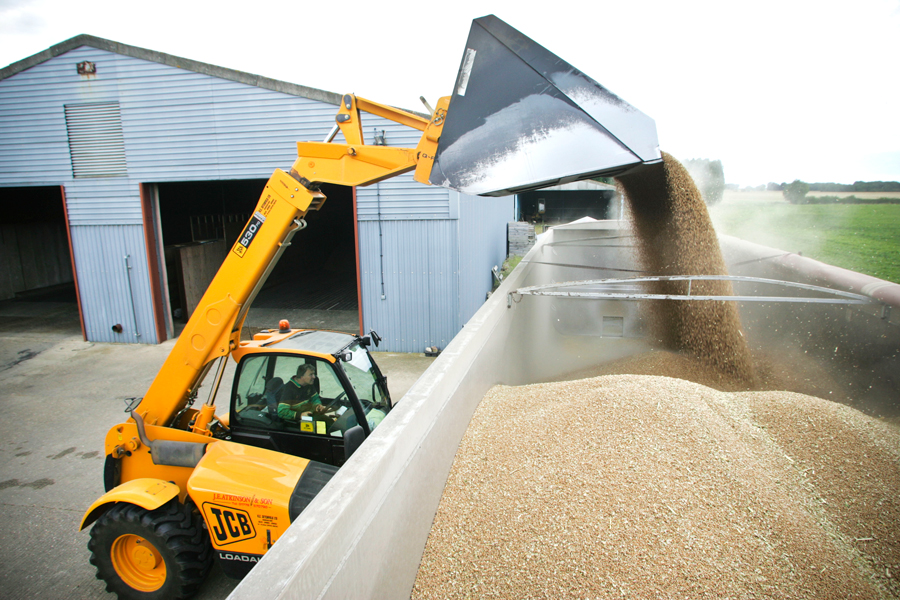How well do you know your wheat markets?
29th June 2020
Breeders Limagrain UK have run a short and fun online quiz to find out what British farmers really know about their wheat markets and varieties.
Breeders Limagrain UK have run a short and fun online quiz to find out what British farmers really know about their wheat markets and varieties.
“Who would have guessed that the UK produced 16 million tonnes of wheat in 2019? Only 50% of respondents got this right. Did you know that the UK produced 5 million tonnes of milling wheat in 2019 – 50% of respondents did!
67% of respondents were correct that the animal feed market is the largest market sector for wheat grown in the UK, and nearly 70% identified LG Skyscraper as the highest yielding variety on this year’s AHDB Recommended List.
“With over 300 entries, we are delighted that so many have taken part in our quiz,” says Limagrain’s arable marketing manager, William Charlton. “The responses have been really enlightening with regards to the industry’s understanding of wheat marketing and associated criteria for meeting milling, biscuit or export specifications.”
“However, there was a serious side to running the quiz – it’s really important for growers to understand how to make the most out of any marketing opportunities, so as to get the most out of their wheat crop, and in order to plan ahead to optimise these opportunities.”
Hopefully, by sharing these results, it will help to show up where there are areas of misunderstanding – and set them straight, as well as to confirm which wheat marketing opportunities are really well understood, he says.
The answers
If you’re growing a nabim Group 1 wheat, what market is it eligible for if you hit the correct specification? This was an easy one – over 82% of respondents got this right – it is the milling market.
Which variety is the LG Group 1 variety that’s recognised for its high protein content? 61% of respondents got this one right – the answer is Crusoe. Crusoe was launched in 2012, and it set the standard for a new kind of milling wheat, that offered very high yields with excellent grain quality, combining a stable high Hagberg and high specific weight. It is one of only two GP1 bread wheats approved for export, thanks to its proven, exceptional bread-making quality.
What specifications do millers look for when they are buying bread-making quality wheat? This was answered correctly by almost every respondent – 13% protein, a Hagberg Falling Number of not less than 250, and a specific weight not less than 76 kg/hl. Varieties such as; Crusoe, meet these criteria.
What can you change with your agronomic programme when growing a wheat for milling, as opposed to feed? Harvesting early, using more nitrogen, later – were the correct answers, and only very few respondents got this wrong. This shows that UK growers really do know how to manage milling wheats in the field, to meet the criteria needed for milling markets.
Which Group 2 quality wheat variety has the benefit of OWBM resistance? OWBM resistance is really important to wheat growers, as infected crops produce small shrivelled grains with a damaged outer layer that lets in moisture – which can lead to sprouting. However, only half of respondents knew that LG Detroit is the only Recommended Group 2 wheat to offer this resistance. Any other Group 2 varieties mentioned, do not have the characteristic.
If you’re growing a nabim Group 3 wheat, what’s the main market sector targeted, and what additional markets may be achievable if you grow the right variety and hit the correct specifications? Nearly everyone knew this – it’s biscuit, distilling and export.
Which type of wheat is exported from the UK? 72% knew this was both hard and soft wheats – however 28% thought that only soft or hard could be exported – perhaps a missed marketing opportunity for some?
What are the AHDB export classification groups for both soft biscuit and bread wheat? 80% knew that this is ukp and uks.
If you’re growing a nabim Group 4 Soft wheat, what markets may it be eligible for if you grow the right variety and hit the correct end-use specification? 24% of respondents didn’t know! High yielding soft wheats such as; LG Skyscraper and LG Spotlight, are suitable for distilling, export and animal feed markets.
“If you are growing feed wheat for high yield potential with good grain quality, then the soft wheats; LG Skyscraper and LG Spotlight, certainly offer attributes better than, or equal to the best hard feed wheats available.”
“Both are suitable for distilling and are also being used by some millers for gristing – attracting a premium if grain specifications are met. Other specialist industries such as; Weetabix, also attract a premium, so it’s well worth finding out what contracts are available in your region,” advises William.
If you’re growing a nabim Group 4 Hard wheat, what markets may it be eligible for if you grow the right variety and hit the correct specification? Only half of respondents got this right – hard wheats are only suitable for animal feed, so offer limited marketing opportunities over soft wheats. If you can grow a high yielding soft wheat that offers marketing opportunities, why grow a hard wheat?
How many thousand tonnes of wheat are used for distilling each year? 60 thousand tonnes! Half of respondents got this wrong, so perhaps missing out on an opportunity to grow wheats suitable for this market?

